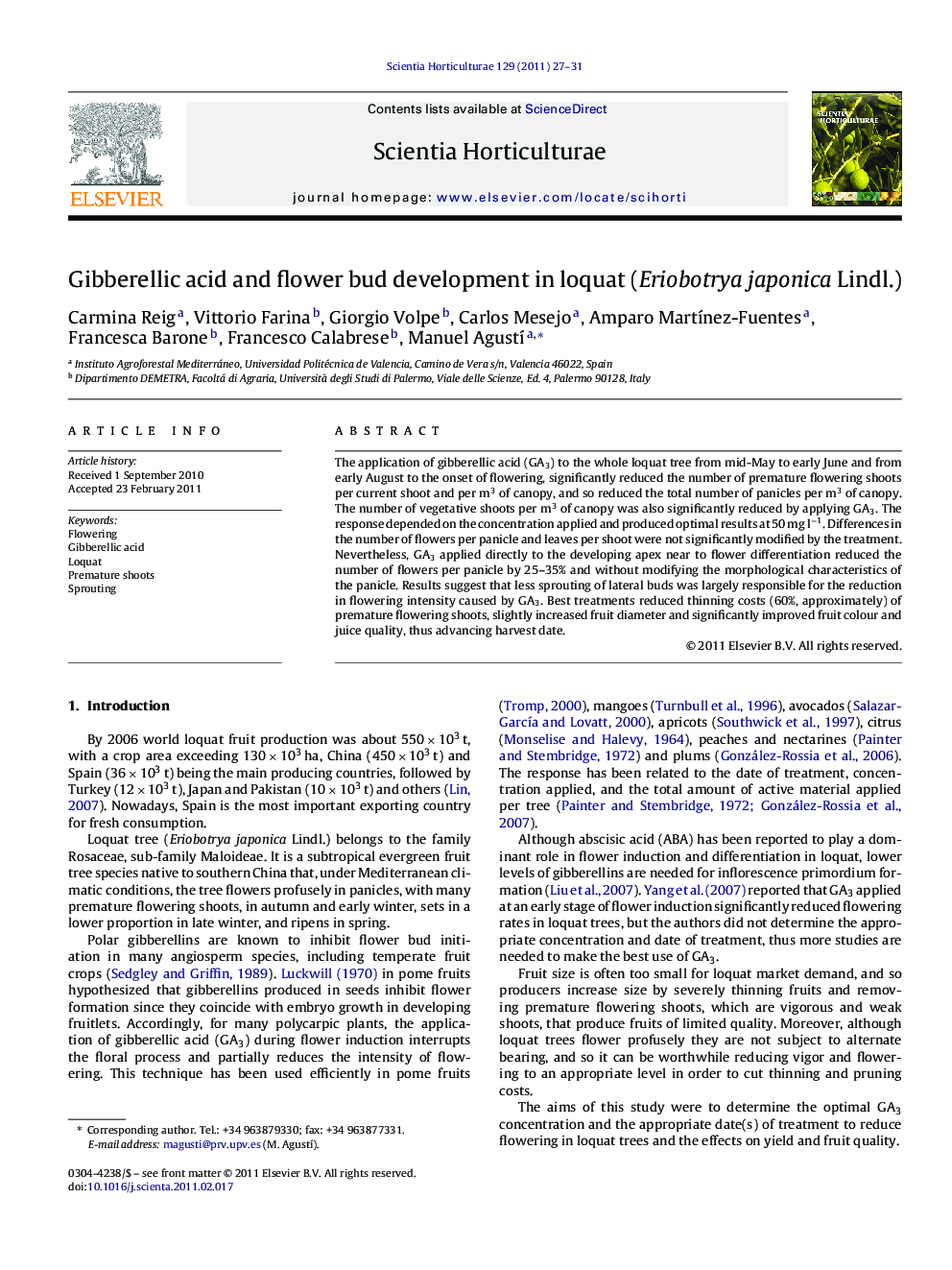| Article ID | Journal | Published Year | Pages | File Type |
|---|---|---|---|---|
| 4568060 | Scientia Horticulturae | 2011 | 5 Pages |
The application of gibberellic acid (GA3) to the whole loquat tree from mid-May to early June and from early August to the onset of flowering, significantly reduced the number of premature flowering shoots per current shoot and per m3 of canopy, and so reduced the total number of panicles per m3 of canopy. The number of vegetative shoots per m3 of canopy was also significantly reduced by applying GA3. The response depended on the concentration applied and produced optimal results at 50 mg l−1. Differences in the number of flowers per panicle and leaves per shoot were not significantly modified by the treatment. Nevertheless, GA3 applied directly to the developing apex near to flower differentiation reduced the number of flowers per panicle by 25–35% and without modifying the morphological characteristics of the panicle. Results suggest that less sprouting of lateral buds was largely responsible for the reduction in flowering intensity caused by GA3. Best treatments reduced thinning costs (60%, approximately) of premature flowering shoots, slightly increased fruit diameter and significantly improved fruit colour and juice quality, thus advancing harvest date.
► Gibberellic acid applied to whole tree at a concentration of 50 mg l−1 significantly reduces flowering in loquat. ► The effect is due because gibberellic acid prevents partially premature flowering shoots from sprouting. ► The number of vegetative shoots per m3 of canopy was also significantly reduced by applying GA3. ► There are two periods of sensitivity, before and after the summer rest period. ► Treatments slightly increased fruit diameter and significantly improved fruit colour and juice quality, thus advancing harvest date.
